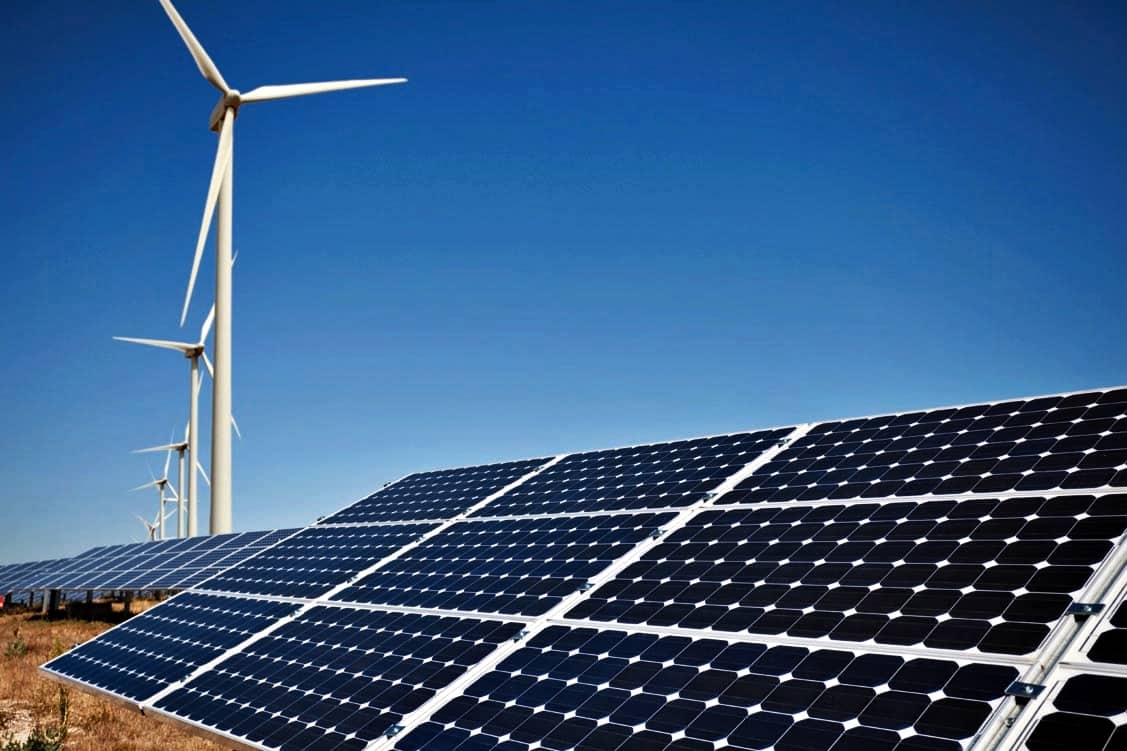Economic Success Of Clean Energy
Wednesday, Apr 09 2014

While Americans know wind and solar energy are clean, they often aren't aware of the economic success story behind these renewable-energy technologies.
Wind and solar power have economic benefits that reach far and wide. They have become increasingly affordable, attracting billions in private development, and today are both mainstream and reliable energy sources across America.
The wide-open New Mexican landscape is an ideal place to find wind turbines. Towering over the desert floor, New Mexico wind farms generate enough power to keep the lights on in over 275,000 average American homes across the state. In its short history, wind power in New Mexico has generated more than $1.3 billion in private investment, and this growing industry supports hundreds of jobs in the Land of Enchantment.
New Mexico is in the top ten states for installed solar capacity. There are more than 80 solar companies at work throughout the value chain in the state, employing nearly 2,000 people. There is enough solar in the state to power 48,000 homes.
Moreover, last year $131 million was invested in New Mexico to install solar for home, business and utility use. This represents a 61 percent increase over the previous year, and 2014 is expected to see even more investment.
Last year, the Manzano Solar Energy Center in Los Lunas, a 20 megawatt solar power plant, went online as one of the largest solar installations in New Mexico. PNM says the project will generate $400,000 in tax revenue for Valencia County this year. And already the developer, First Solar, is constructing another project in Deming — a 50-MW plant that will provide electricity for more than 10,000 homes.
But wind and solar power's economic benefits spread far beyond New Mexico. The clean energy industry reaches all 50 states.
Today, more than 550 manufacturing factories across 44 states serve the wind industry alone. Since 2005, the American wind industry manufacturing workforce grew ten-fold, from 2,500 jobs in 2005 to 25,000 jobs today. And that's just one segment of an industry that employs 80,000 people here in America.
The solar industry employs more than 140,000 people at more than 6,000 companies across the U.S. This means that in communities in every part of America, thousands of solar installers and electricians are operating on the ground, every single day, in all 50 states.
Renewable energy saves American consumers money too. New Department of Energy data show the eleven states with the most wind energy have saved more on their electric bills than ratepayers in all other states. Corporate leaders such as Walmart, Apple and IKEA are all leaders in solar, as well, investing millions to generate their own, clean energy. American companies know solar helps their bottom lines — which is why 117 million Americans live within 20 miles of a commercial solar installation.
All this is possible because smart public policies continue to help ensure that American consumers can exercise energy freedom, choosing the source that best meets their needs and the needs of their children. For a century, the U.S. has effectively used our tax code to encourage domestic energy production and drive down their related costs for all energy sources.
The Production Tax Credit (PTC), wind power's primary incentive, has driven constant improvement in the technology to make wind power more affordable – dropping 43 percent in just four years. As of 2013, 72 percent of a wind turbine's value was made in the USA.
With the Investment Tax Credit (ITC) in place, the average price of a solar system has dropped by more than 50 percent since 2010, benefiting consumers, businesses, schools and government entities.
However, smart federal policies supporting wind and solar can't do their job if Congress won't let them.
While renewable energy opponents in Congress continue to delay its decision to extend the PTC, tens of thousands of American jobs and billions of dollars in private investment hang in the balance. While manufacturers from Iowa to Kansas to Colorado are hiring at a record pace to keep up with demand, none are able to say with certainty that they can maintain a healthy workforce in the long term. The PTC's on-again, off-again nature makes planning for the future prohibitively difficult for businesses. Predictable, stable, pro-growth tax policy is vital if the U.S. wind energy industry is to keep growing.
Whether because homegrown renewable energy helps creates jobs or because it helps them save money on their electric bills, Americans recognize renewables are a good deal and that's reflected in polls. Just in December 2013, a USA Today poll found that 73 percent of Americans are in favor of continuing tax policy support for wind power, solar power and other renewables.